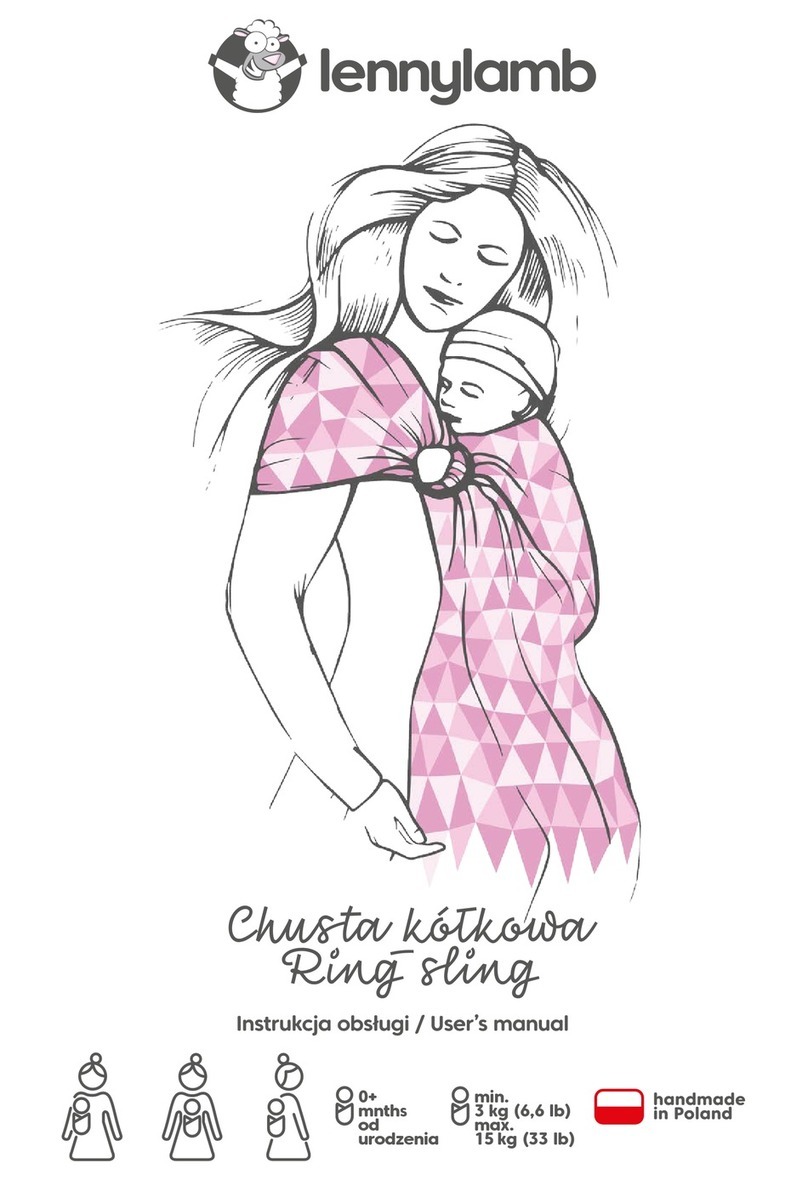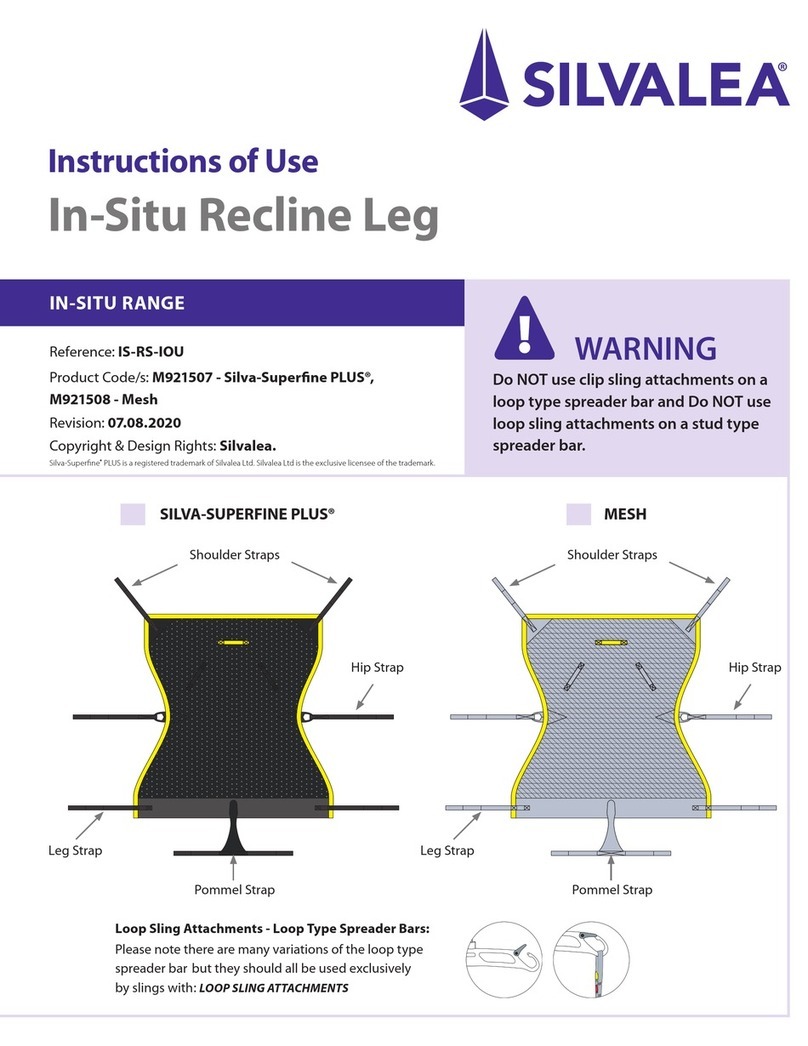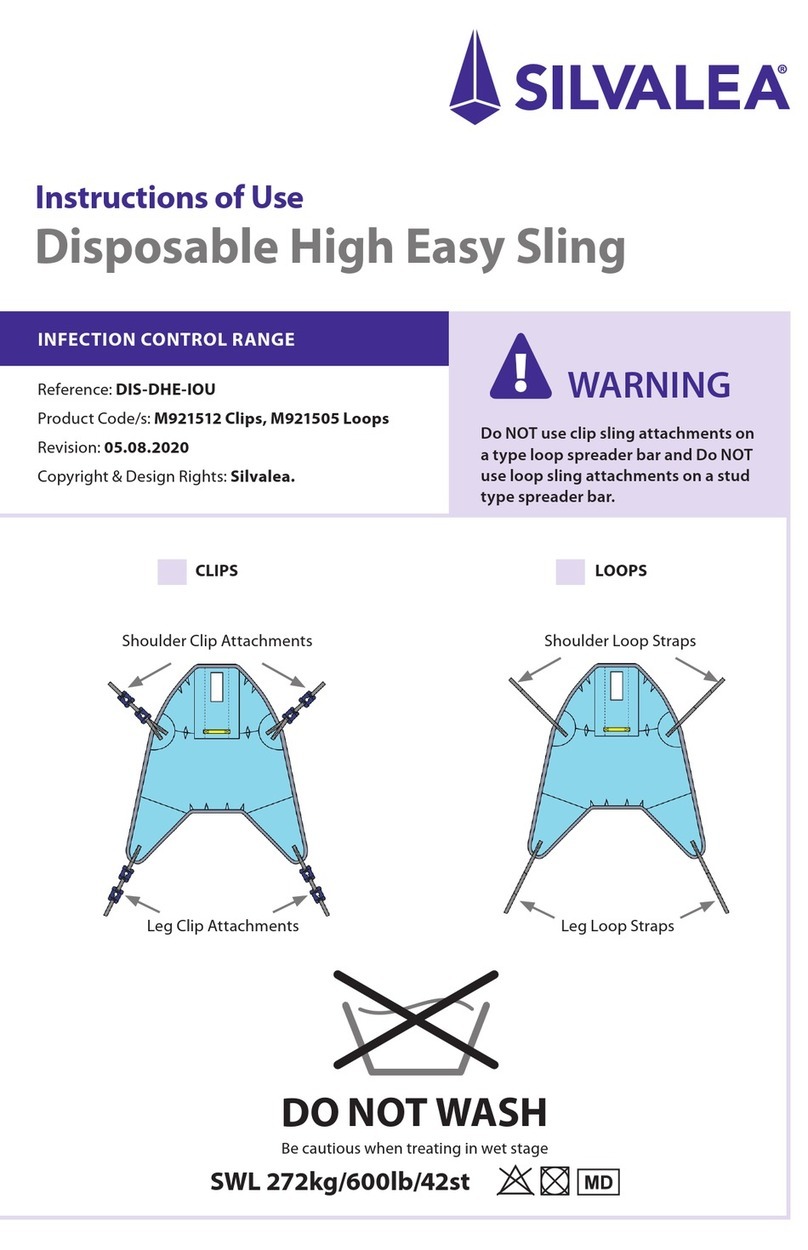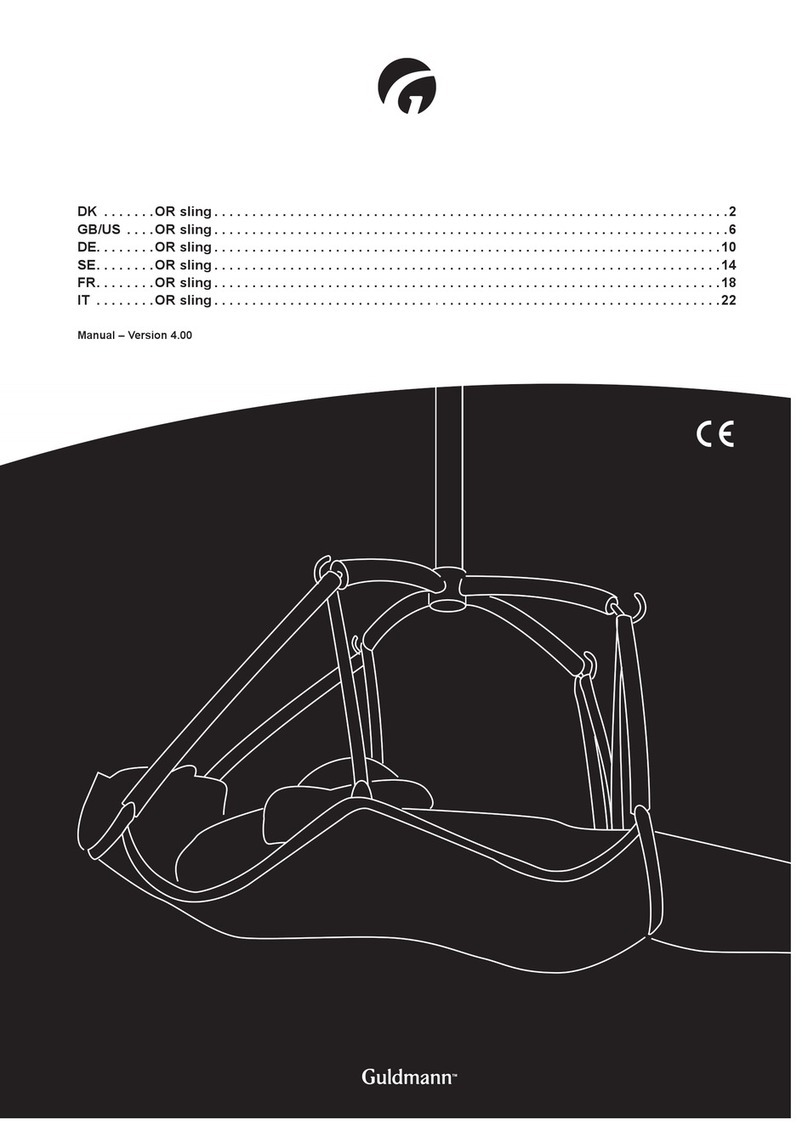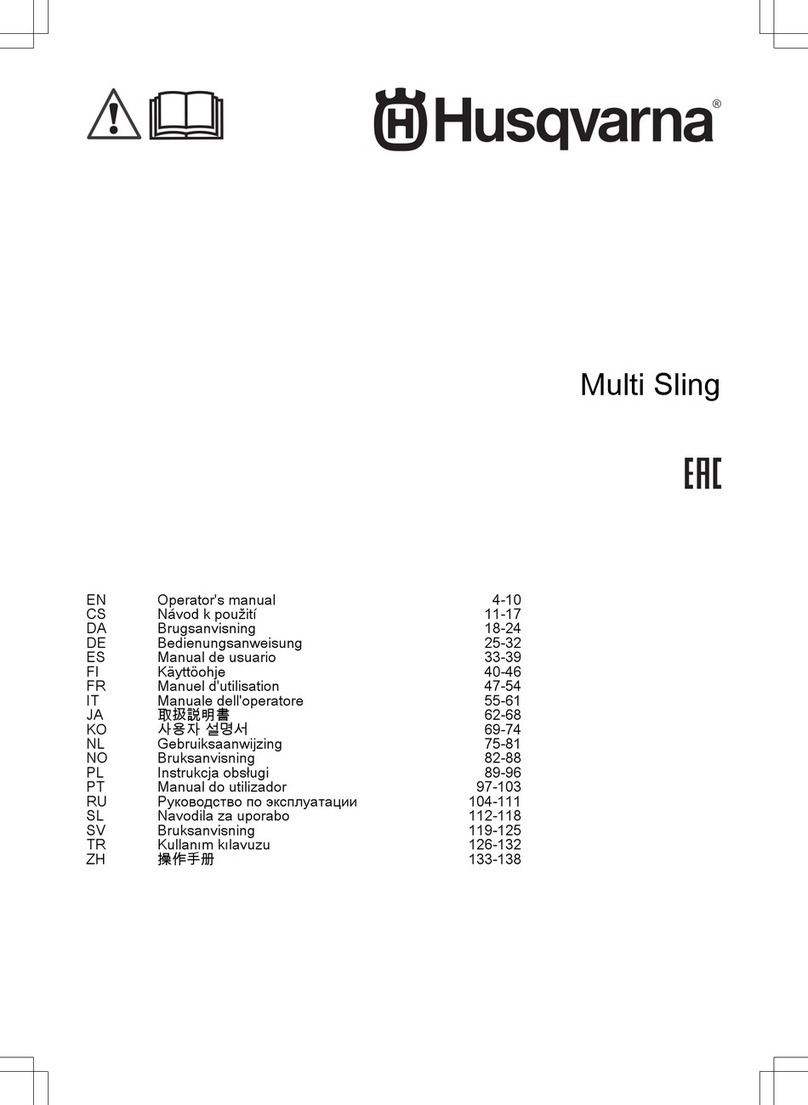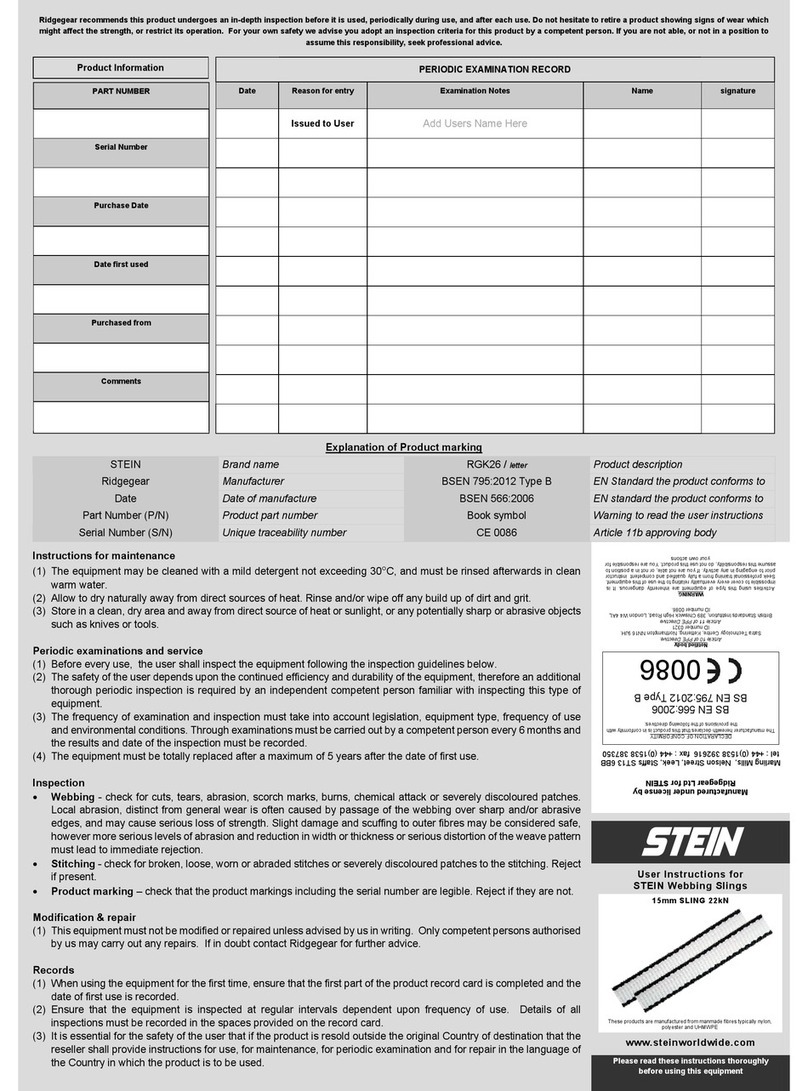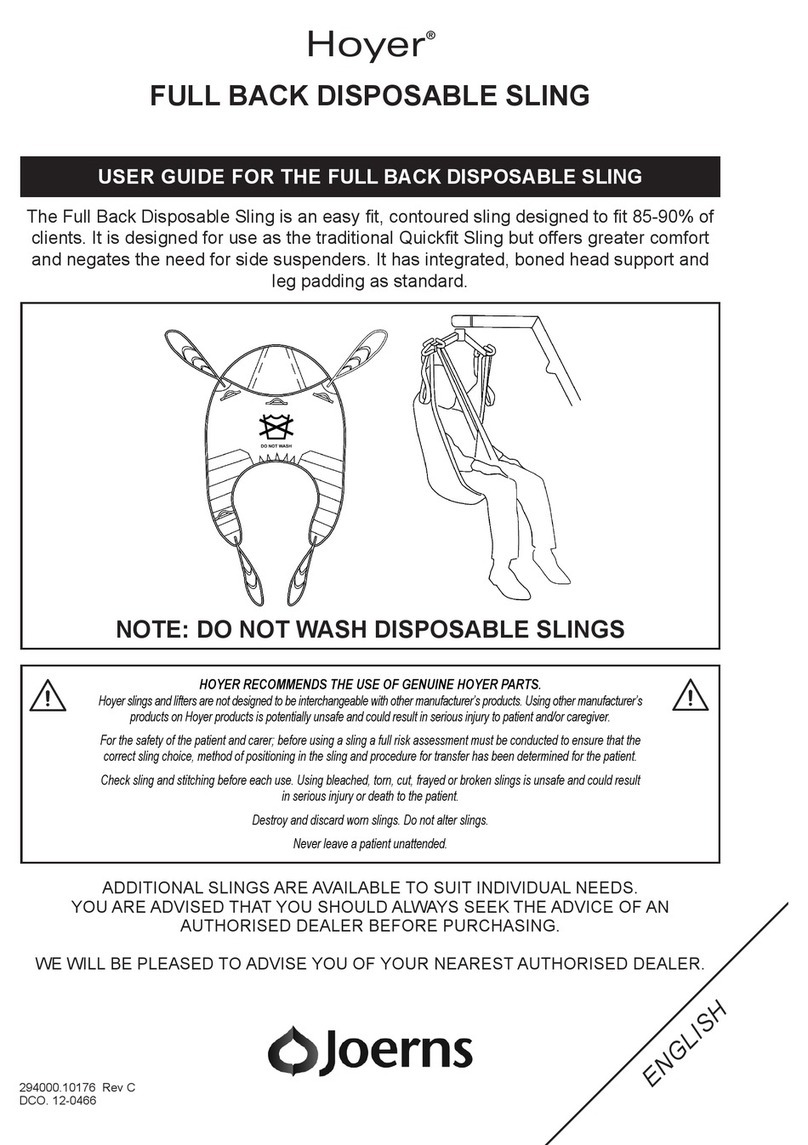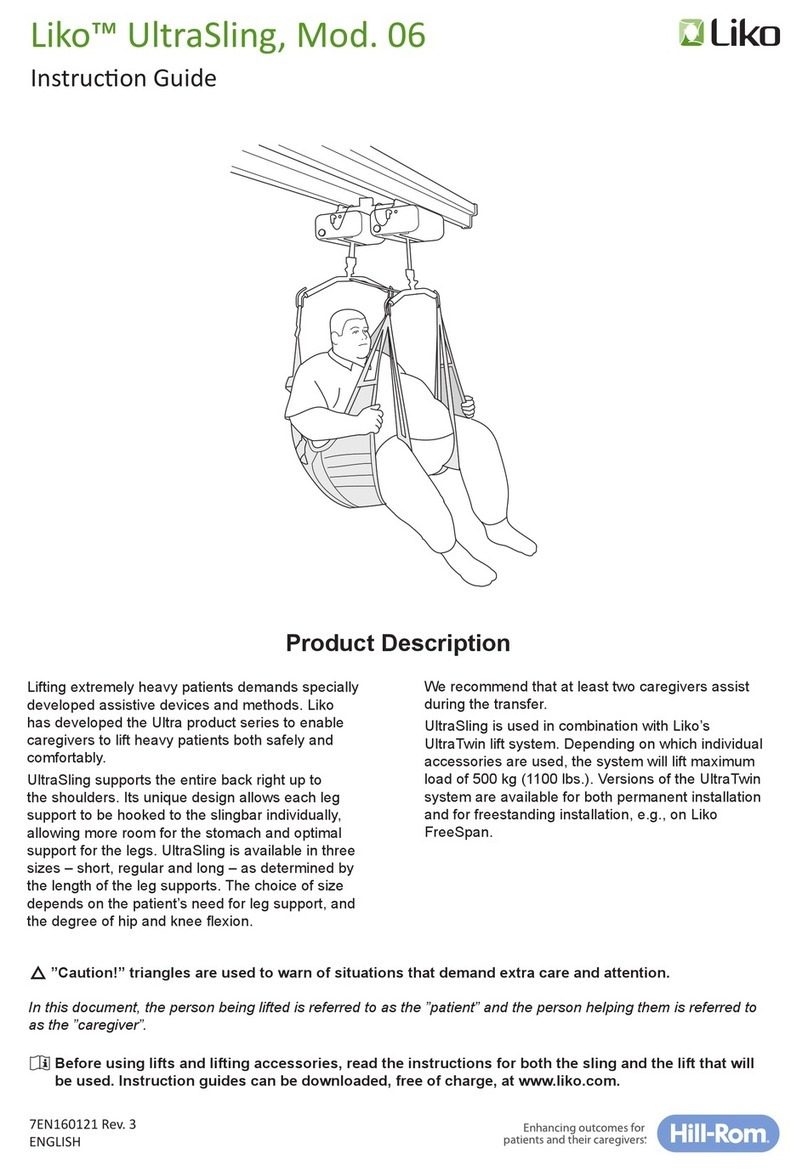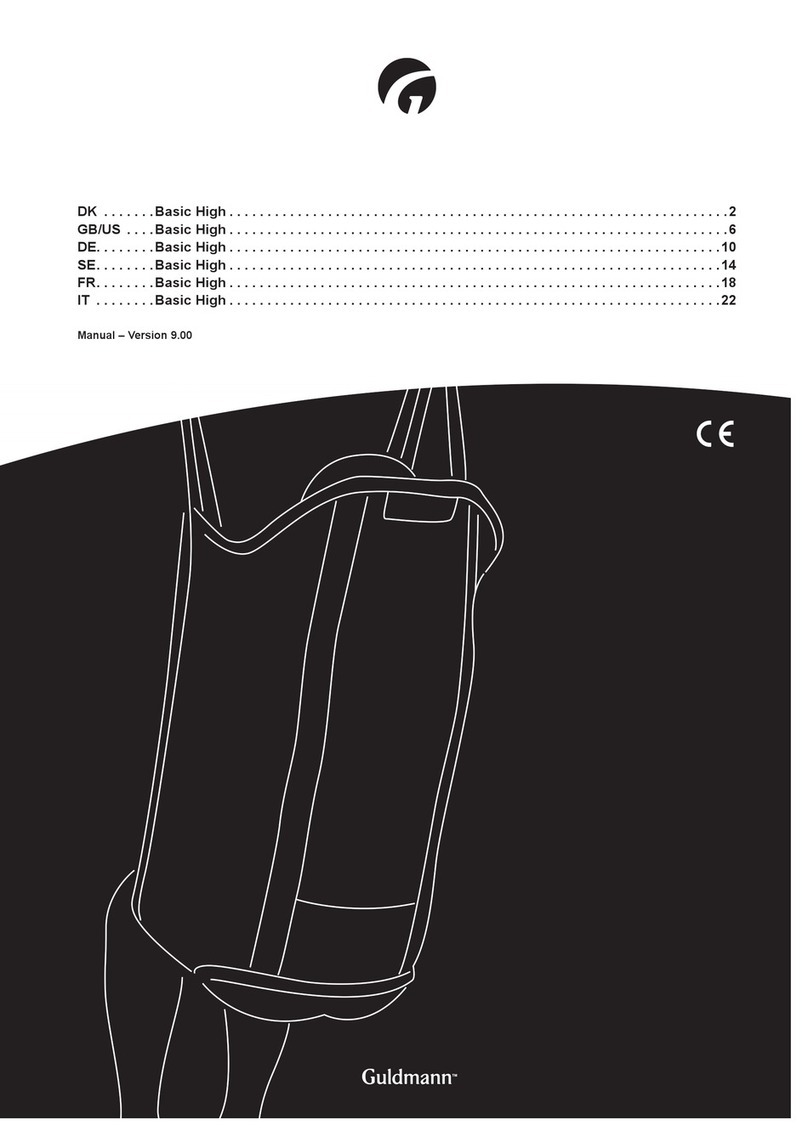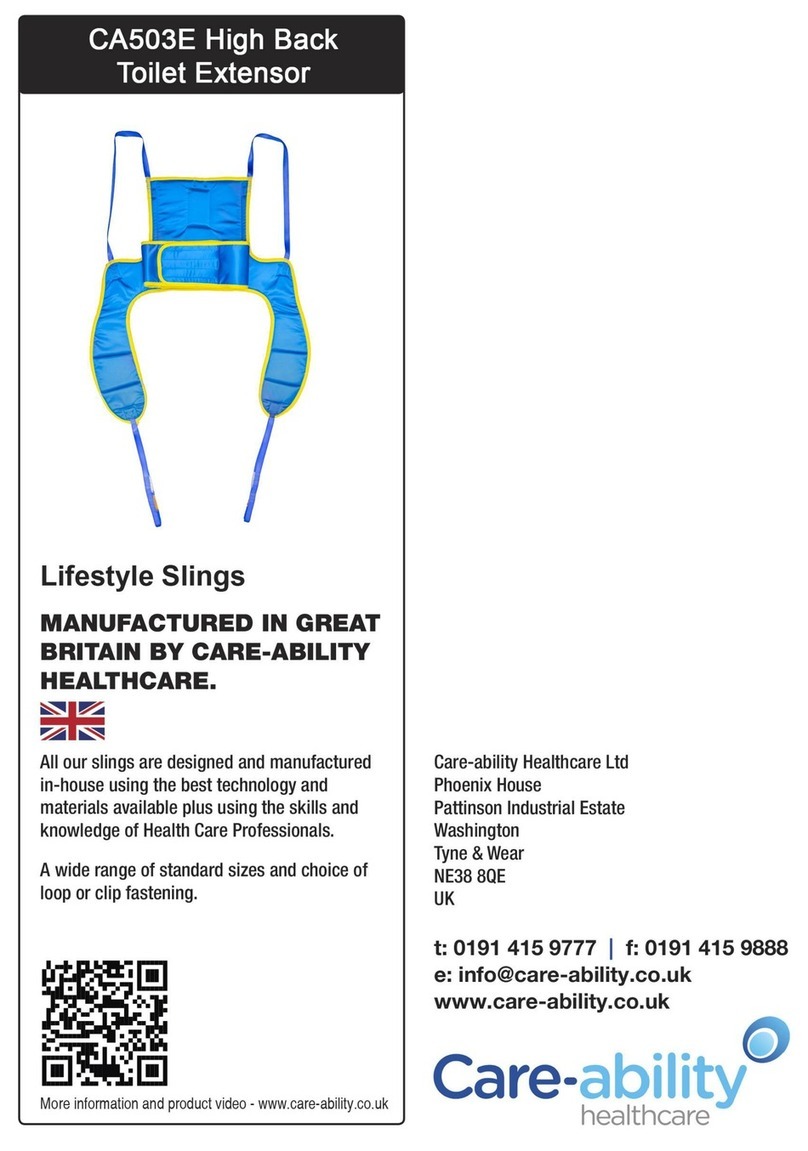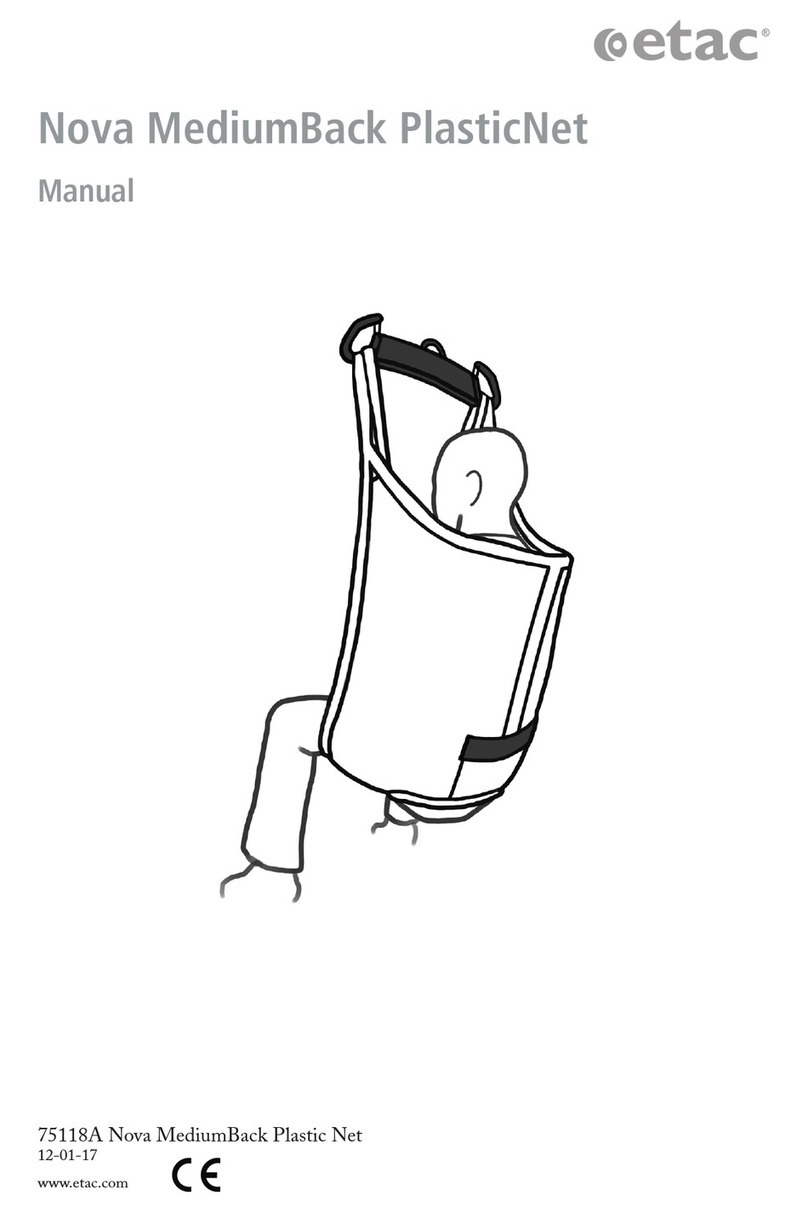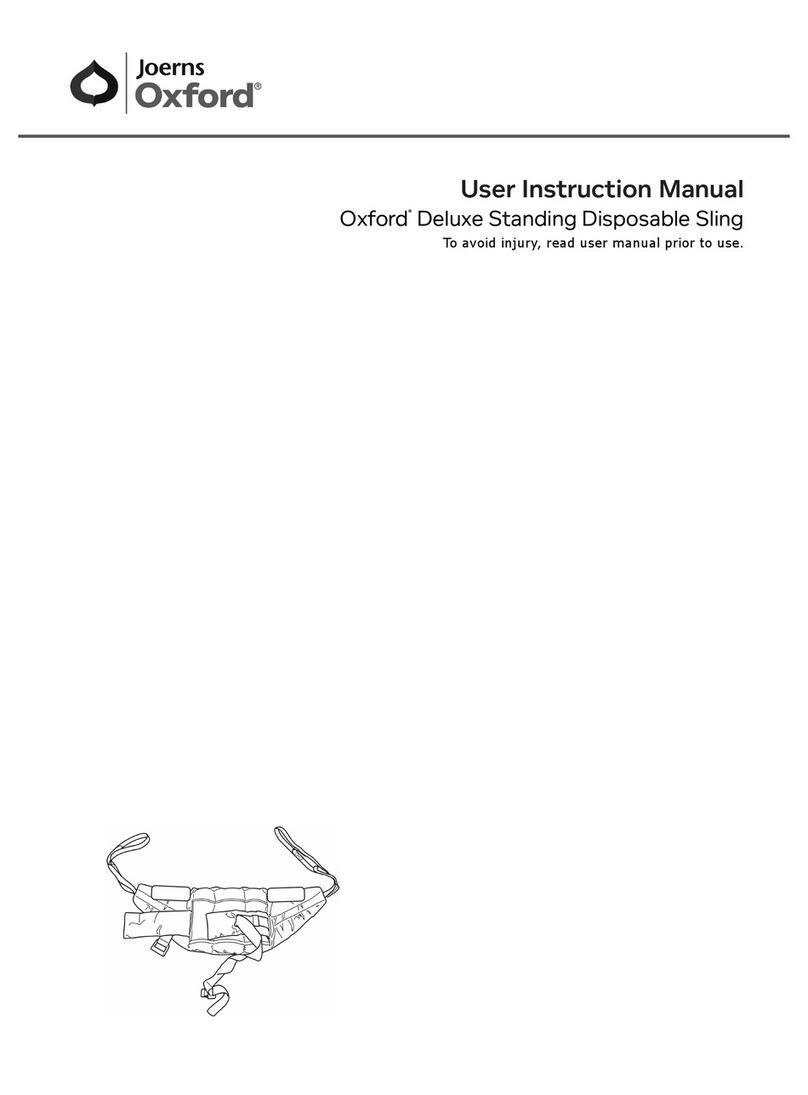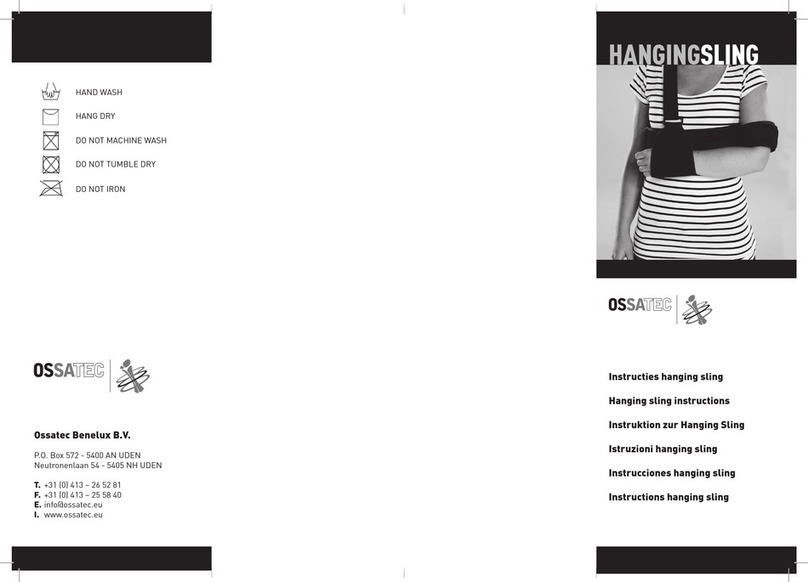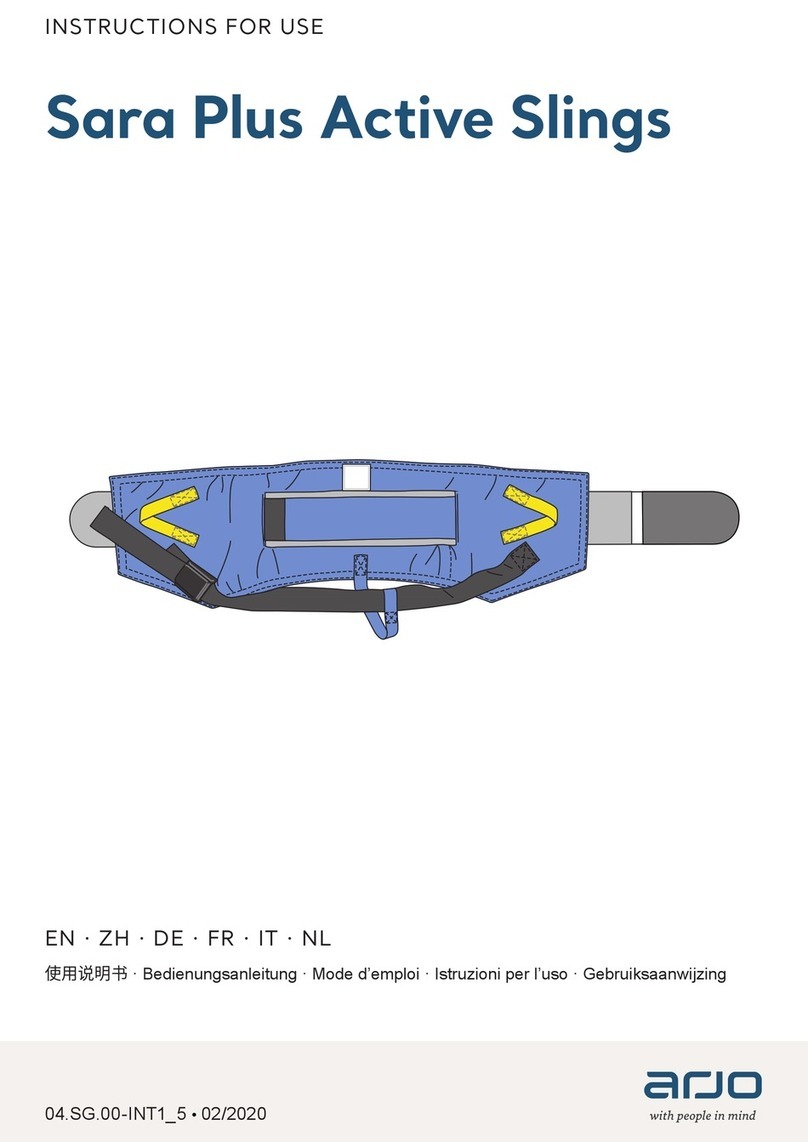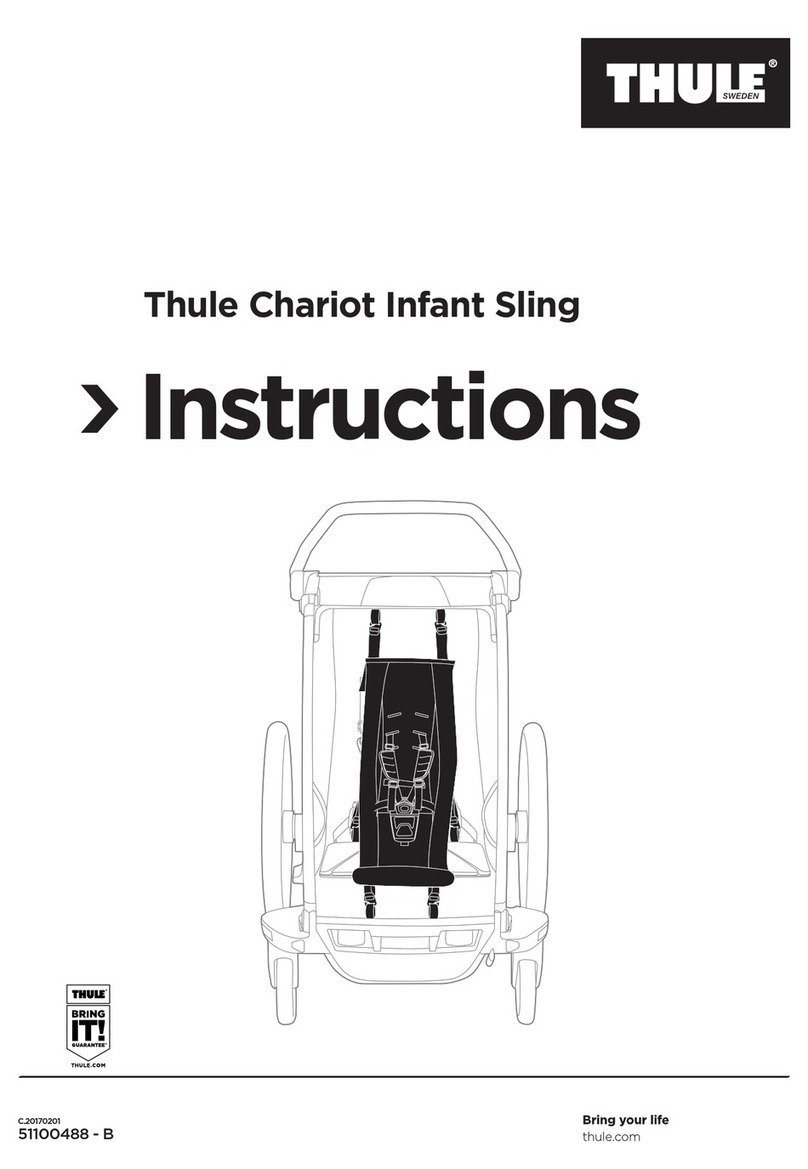Novis ProSling User manual

PATIENT LIFTING SLINGS
FOR YOKE FRAME LIFTERS
User Guide
General Purpose
General Purpose
with Head Support Hygiene
Hygiene with
Head Support

overview
Slings specifically designed for attachment
to yoke frame patient lifters.
ProSling Yoke Frame slings are designed to lift
patients from seated (chair) or reclined (bed or
floor) positions. With a range of different models
versatile enough for general patient transfers,
toileting or hygiene care, these slings are
manufactured from the highest quality material
and are contoured for patient fit and security.
An easy fitting sling with adjustable straps to suit
general lifting for a variety of patient positions, the
multi-user models are manufactured from a
re-usable, long wearing polyester mesh designed
to maximise air circulation. The mesh fabric allows
water to pass efficiently through the sling, making
these products suitable for washing and bathing.
Head support options suit patients with limited
upper body support – the built in head support
provides a greater sense of security and comfort
during transfer.
These slings are suitable for use with either a single
or double yoke spreader bar, and will suit the
majority of lifter products on the market.
Some lift manufacturers make claims that only
their brand of sling should be used on their lifter.
There is no Australian Government or TGA
directive to support these claims.
important notice
Before using the sling, it is important to read this
user guide and understand the operating
instructions and safety precautions. Failure to do so
could result in patient injury and/or damage to the
product.
The ProSling range has been tested and complies
with requirements of AS/NZS ISO 10535:2011.
If you have any questions, please contact
Novis Healthcare on 1300 738 885
definitions of symbols used
Important information
Warning
Do not…

Leg section yoke
attachment straps
3 lengths; outer strap
colour-coded by size
Upper body yoke
attachment straps
3 lengths; outer strap
colour-coded by size
Adjustable head support straps
Care label with size marking
Body section
Positioning handles
Torso band
(Hygiene models)
Padded mesh leg section
sling components

safety precautions
DO NOT lift a patient unless you are
trained and competent to do so. Ensure
that all users read this guide, and any
relevant lifter instructions, before fitting a
sling or operating a patient lifter.
DO NOT use a Yoke Frame Sling on a Pivot
Frame. Sling failure and patient injury
could result.
Patient lifters and slings should only be
used under the supervision of a qualified
healthcare professional. As a carer, you are
responsible for the patient’s safety. You
must be well informed of the patient’s
condition and ability to manage the lifting
situation.
Never leave a patient unattended in a
lifting situation.
Never liftapatienthigher offtheunderlying
surfacethan isneeded tocomplete thelifting
andtransferprocedure.
Lifting and transferring a patient always
involves a degree of risk. Ensure all users
are trained and familiar with the user
guides for slings, lifter systems and any
related accessories. A complete
understanding of the contents of the user
guides is essential.
ALWAYS ensure the correct sling is used to
match the patient’s weight and suits the
patient’s needs with regard to model, size,
fabric and design. Do not exceed the
weight capacity of the sling or lifter.
ALWAYS ensure the sling is appropriate for
the lifter and the lifting situation. Exercise
caution and care when using lift
equipment and accessories.
Regularly inspect the sling for damage and
general wear and tear, especially after
laundering. Check carefully for wear and
damage to seams, fabric, straps and strap
loops. Do not use if the sling is damaged or
worn in any way.

choosing the correct size
It is very important to use the correct sized sling and ensure it is properly fitted before
attempting to lift. This will ensure the patient feels safe, dignified and comfortable,
and allows the carer to be confident of an effective and safe procedure.
Use these sizing recommendations as a guide only. The outside strap of each
sling is colour coded to indicate size. Please refer to the ProSling Size
Selection Chart for guidance on sizing recommendations. This chart is
published in the ProSling Range Guide and is available to download from
www.novis.com.au
Size / strap colour
S
Shoulder circumference mm
C
Sacrum to Shoulders mm
Yoke
General
Purpose
Small 700 - 790 460 - 490
Medium 800 - 840 500 - 540
Large 840 - 1080 540 - 640
Extra Large 1080 - 1350 640 - 765
Extra Extra Large 1350 - 1400 765 - 800
Size / strap colour
S
Shoulder circumference mm
H
Sitting Height mm
Yoke
General
Purpose
with Head
Support
Small 700 - 780 640 - 800
Medium 780 - 900 800 - 920
Large 900 - 1100 920 - 1000
Extra Large 1100 - 1300 1000 - 1160
Extra Extra Large 1300 - 1400 1160 - 1200
Yoke
Hygiene
with Head
Support
Small 700 - 860 580 - 620
Medium 860 - 980 620 - 700
Large 980 - 1060 700 - 800
Extra Large 1060 - 1200 800 - 900
Extra Extra Large 1200 - 1300 900 - 920
Yoke
Hygiene
Small 700 - 900 640 - 800
Medium 900 - 1000 800 - 920
Large 1000 - 1120 920 - 1000
Extra Large 1120 - 1230 1000 - 1160
Extra Extra Large 1230 - 1350 1160 - 1200
Other manuals for ProSling
1
Table of contents
